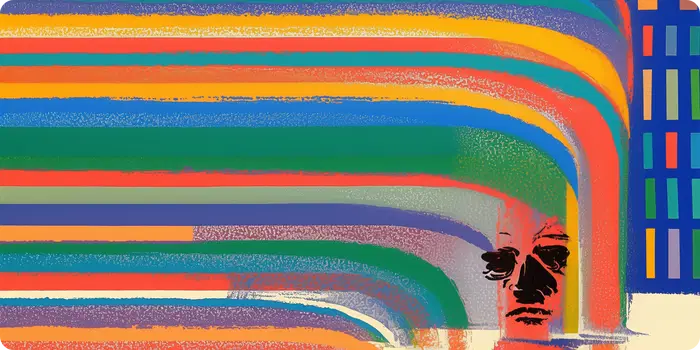A massive wealth transfer is underway: over $84T is set to move from Boomers to Millennials and Gen Z in the coming decades.
As that shift unfolds, so do the standards for what holds value — digitally and culturally. Crypto’s rise is one sign. Another? The growing influence of younger collectors in the art world.
In 2024, Millennials and Gen Z made up 25–33% of buyers at major auction houses — more than double their share five years ago. At @ChristiesInc's recent $AI art sale, 48% of bidders were from these younger generations, 37% new to the platform.
Here’s what that tells us — and what comes next. 👇
~~ Analysis by @davewardonline ~~
Called Augmented Intelligence, the show itself brought in $728K — easily clearing its $600K estimate — and confirmed what the numbers hinted at: this new generation of collectors is eager to spend on art shaped by algorithms and prompts.
But this moment didn’t come out of nowhere. Back in 2018, Christie’s made history with the $432.5K sale of Portrait of Edmond de Belamy, the first AI-generated artwork auctioned by a major house.
Since then, momentum has only grown. Last November, Sotheby’s sold $AI God. Portrait of Alan Turing by Ai-Da for $1.08M — well above its $120–180K estimate — even as their overall auction sales dropped 28%.
The appetite may seem sudden, but the interest itself isn’t surprising. As $AI becomes woven into daily life, it’s natural that younger generations gravitate toward works that reflect — and question — its impact.
|— NFTs and $AI Art: A Natural Pairing
Of the pieces in the Augmented Intelligence auction, 25% involved NFTs, and the majority of transactions were processed in crypto, as was last year’s sale of $AI God. Portrait of Alan Turing.
It's a trend that's becoming increasingly common. While Christie's — and much of the art world — has been careful to draw lines between $AI art, NFTs, and crypto, in practice, they're deeply intertwined.
NFTs offer a native way to monetize, track, and resell digital works, like $AI art. Additionally, many leading $AI artists first gained recognition through NFT platforms, demonstrating how NFTs have long been the connective tissue for artists exploring technology and art.
They also align with the sensibilities of younger generations’ collectors who favor nontraditional collectibles like sneakers, rare tech, or streetwear — all items which blur the lines between art, asset, and identity, just as NFTs do.
Yet NFTs also offer more accessibility (both in handling and in price) than traditional blue-chip art. And according to @artsy's 2024 report, 82% of collectors under 37 have purchased art online, underscoring a digital-first approach.
|— On Cultural Alignment
These preferences didn't come from nowhere.
Younger generations have weathered economic volatility, rising housing costs, and a steady erosion of trust in traditional institutions. The 2008 financial crisis, in particular, exposed deep flaws in the system and pushed many toward alternative tools, including crypto.
This skepticism of legacy systems and fluency in digital platforms shapes how these generations approach art. It makes sense that people drawn to frontier tech would be particularly receptive to art that explores $AI and that uses NFTs as the medium, or a component, for doing so.
In this context, NFTs represent far more than a gimmick — they're internet-native infra that embodies these generations' attitudes towards ownership, investment, and cultural participation, while offering the increasingly important transparency that younger collectors desire.
In other words, the crossroads of $AI art and NFTs resonates with this demographic because they're:
• ⬆️ Emerging — Still defining their place in the art world
• 🤖 Relevant — Reflecting the role of technology in daily life
• 🌐 Digitally integrated — Offering accessibility and portability
• 💎 Aligned with crypto — $AI art can function both aesthetically and as onchain assets
Furthermore, even as the speculative NFT boom cooled, auction sales of $AI and generative art hit a new high in 2023. Recent research reports that 40% of collectors plan to increase their $AI art buying, suggesting a generational shift is in the works.
The Artists Shaping the Movement
While there are many creatives breaking ground here, some of the largest names include:
• Botto | @bottoproject — A decentralized, autonomous $AI artist governed by a DAO with over $4M in sales
• Claire Silver | @ClaireSilver12 — Pioneering $AI artist with work in LACMA who has shown at Christie's and the Louvre
• Ivona Tau | @ivonatau — A generative artist whose work blends technical precision with abstraction
• Pindar Van Arman | @VanArman — Uses neural networks to train machines that paint in his style
• Refik Anadol | @refikanadol — Creates immersive installations built from data and machine learning
• Roope Rainisto | — Finnish $AI artist blending photography and generative tech to explore the surreal boundaries of reality and virtuality
The Future of Collecting
The rise of $AI art NFTs isn't just about hype or novelty or tech for tech's sake.
It's about a new generation of creators and collectors — shaped by economic instability, steep entry barriers to traditional wealth, and a deep familiarity with digital systems — gravitating toward a medium that reflects their worldview.
If those instincts hold, art with $AI as the subject matter and NFTs as the medium may be the format best aligned with where the market is headed.
$AI art captures the moment we're living through: a time when machines collaborate with creators and boundaries between process and product blur. NFTs make that culture collectible by offering ownership that feels native to how this generation navigates both art and finance.
Together, they form an artistic venue tuned to Millennial and Gen Z sensibilities. And given this alignment, as younger collectors gain purchasing power and cultural influence, auction houses and galleries are likely to lean harder into this category — experimenting, adapting, and ultimately helping it scale.
